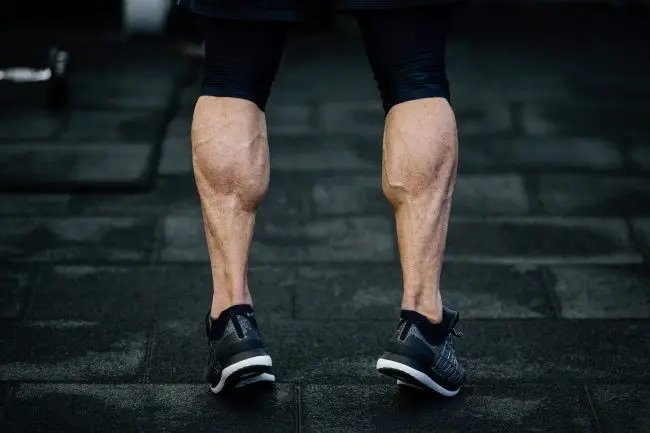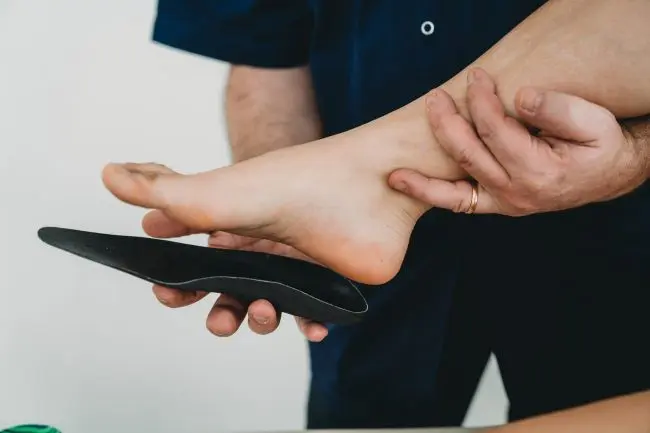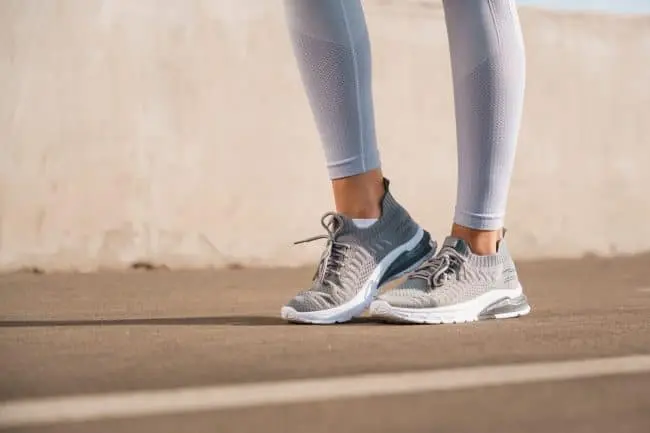Plantar Fasciitis (commonly referred to as plantar heel pain or plantar fasciopathy) is the most common overuse issue affecting the foot. It presents as pain on the heel and throughout the sole of the foot. It is typically more painful with initial steps in the morning and weight bearing after a period of rest. It is more common in sedentary individuals but can account for 8% of all running related injuries (1).
A variety of interventions are used in the management of Plantar Fasciitis (PF). Everything from foam rolling the plantar fascia, to buying orthoses, to losing weight are all advertised as solutions to the problem. A recent systematic review caused some controversy on social media, given that progressive strengthening was not recommended as part of the core management for PF due to the absence of high quality trials (2). Instead, stretching, foot taping and educational interventions were recommended as the core approach as well as load management, footwear and addressing related conditions such as BMI.
1) Strength training
Strength training may have become popular in the treatment of PF due to the benefits of heavy slow resistance strength training in tendinopathies and the similarity in symptom presentation.
In a study explored in this research review by Tom Goom, 70 patients with PF were randomised to either a self dosed HSR programme or a predetermined HSR program. Sessions were performed every other day for 12 weeks along with education and a heel cup. The self dosed group did as many sets as possible, going as heavy as possible but less than their 8 repetition maximum (RM). The predetermined group performed a set protocol between 12RM to 8RM.
By 12 weeks, there were no statistically significant differences between any of the outcome measures. Only 4 patients improved to reach an acceptable symptom state. This doesn’t mean that strength training doesn’t have a role in the management of PF. It may just mean that your marathon runner and your sedentary older adult don’t need the same treatment (i.e. weight lifting). When used in conjunction with education, stretching and taping, strength training may still be appropriate for individuals who enjoy it or who require a return to sport.
2) Stretching
Stretching has traditionally been recommended as a treatment strategy for PF. This may be due to the reduced ankle dorsiflexion that is common in this population. An article covered in this free research review by Tom Goom sought to determine the relationship between gastrocnemius tightness and symptom severity in PF.
33 patients with PF completed 3 x 15 repetitions twice daily of the modified Aldredson’s eccentric protocol (knee kept in extension to target the gastrocnemius). Patients were also given a Strassburg Sock or night splint if symptoms were severe first thing in the morning. Outcome measures included visual analogue scale with first steps in the morning and ankle range of motion. These were recorded at baseline, 6 weeks and 3, 6, and 9 months.

There were significant improvements in gastrocnemius tightness and pain. There was also a strong statistically significant correlation between gastrocnemius tightness and severity of heel pain.
Now, if you’re thinking – ‘’wasn’t their exercise more of a loading programme, not a stretching programme?’’ – You’d be correct. One cannot recommend static and dynamic stretching based on a protocol that likely contributed to both lengthening and strengthening of the gastrocnemius. Nonetheless, the systematic review recommended that stretching is ‘’universally applied’’ to all individuals with PF (2). The type, duration and frequency of stretching should be adapted to the individual.
3) Orthoses/Insoles
Foot orthoses in the management of PF generates much debate. A podiatrist might tell you they are essential, while a physiotherapist might not even consider them.
In a study discussed by Ian Griffiths in this research review, the authors conducted a double blind RCT, comparing custom-made foot orthoses to GP-led usual care in 185 patients with PF. Participants were randomised into 3 groups. Group 1 was referred to a podiatrist for custom-made ortheses, group 2 was referred to a podiatrist for sham ortheses and group 3 was the GP-led usual care (including CSI). All 3 groups were given information related to PF along with stretching and strengthening exercises.

Interestingly, at 12 weeks, the GP-led group showed greater improvements than the custom made foot orthoses group. Furthermore, there were no significant differences reported between the custom made foot orthoses and the sham foot orthoses.
Given the limitations of the study, (which you can read here) it would be unwise to never consider orthoses for patients with PF. As suggested by Morrissey and colleagues (2021), custom orthoses may be provided as an adjunct after 4-6 weeks of the recommended core approach of education, stretching and taping (2).
4) Footwear
Changing footwear is an easy method to modify symptoms for individuals with PF. However, there is currently no evidence to suggest what the optimal shoe design is to help reduce PF symptoms. A paper delved into by Ian Griffiths in this research review sought to determine if maximalist running shoes could be used as part of a management protocol for PF and if it had any measurable impact over standard running shoes.
38 patients with unilateral heel pain for 1-6 months and PF thickening (confirmed via ultrasound) were recruited and completed the study. Patients were randomly assigned to either the maximalist shoe (more cushioned due to greater midsole thickness) or the standard shoe. All participants were also given advice on stretches, night splint use, ice water use and NSAIDs for 10-14 days. The study lasted for 12 weeks with ultrasound taken post-study along with VAS.

There was a decrease in mean PF thickness in both the maximalist and standard shoe but it was not statistically significant. However, there was a statistically significant difference between groups where the maximalist shoe had a greater reduction in pain compared to the standard shoe.
Specific recommendations for the ideal shoe design remain unclear. However, based on this study it would seem that addressing footwear continues to be a useful tool to modify symptoms. This study was not without its limitations, which you can view here.
5) Injection
Corticosteroid injection (CSI) has been used to treat PF despite there being an increased risk of plantar fascia rupture. This research review by Tom Goom explored a study which aimed to evaluate the treatment effect of CSI, strength training and a combination of the two for PF.
The authors recruited 90 subjects who were randomised to one of the three groups. The CSI only group had injections once per month until plantar fascia thickness was less than 4mm. The strength training only group performed heel raises, resisted toe flexion and ankle inversion exercises with stretches for the calf and plantar fascia. The third group was a combination of both.
The Foot Function Index, first step pain and average pain during function were assessed at baseline, 3, 6, 12, and 24 months. There were significant improvements by 6 weeks in pain during function and the foot function index with the greatest improvements seen in the combination group. The authors concluded that CSI and strength training are the best treatment for PF, despite the overall low quality of evidence for this approach. It may be wise to consider an injection as a later option, if symptoms are not improving with the core management approach described by Morrissey and Colleagues (2).
